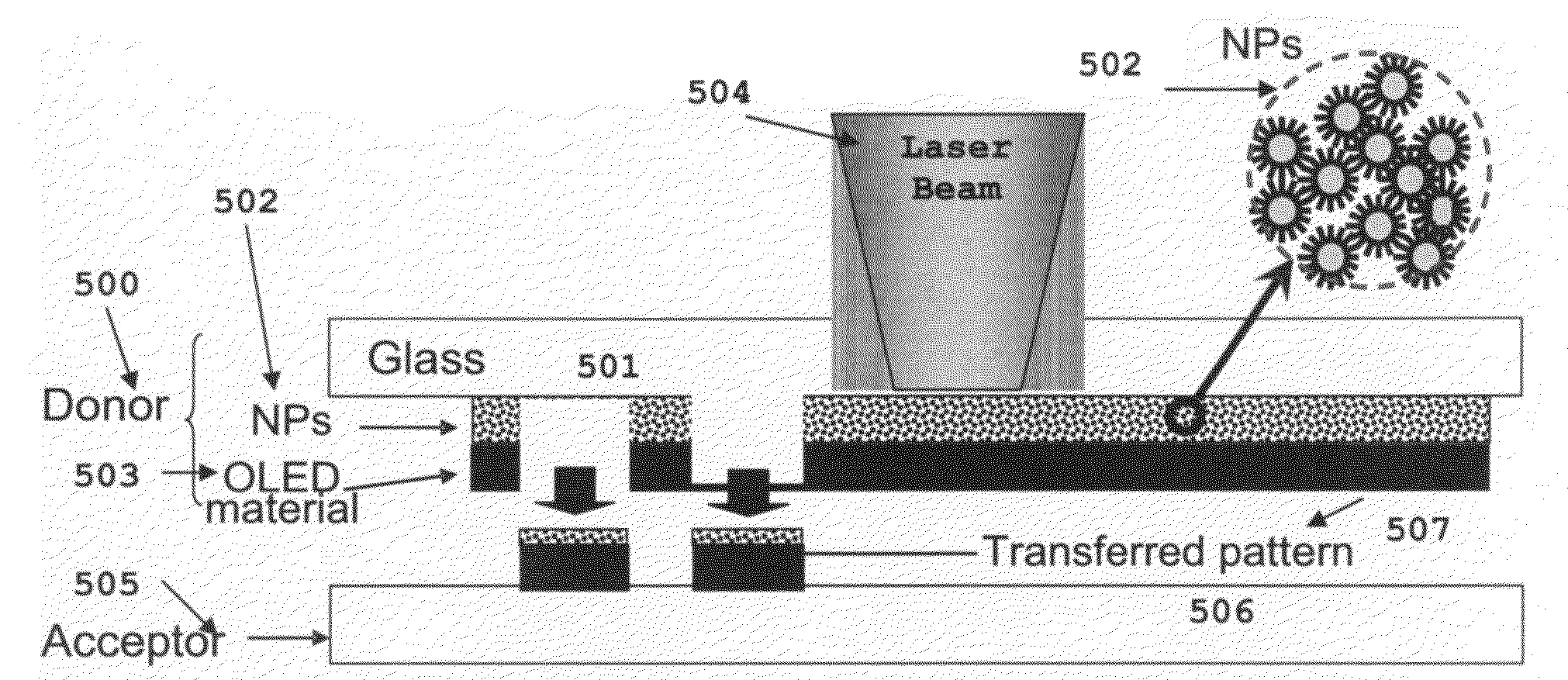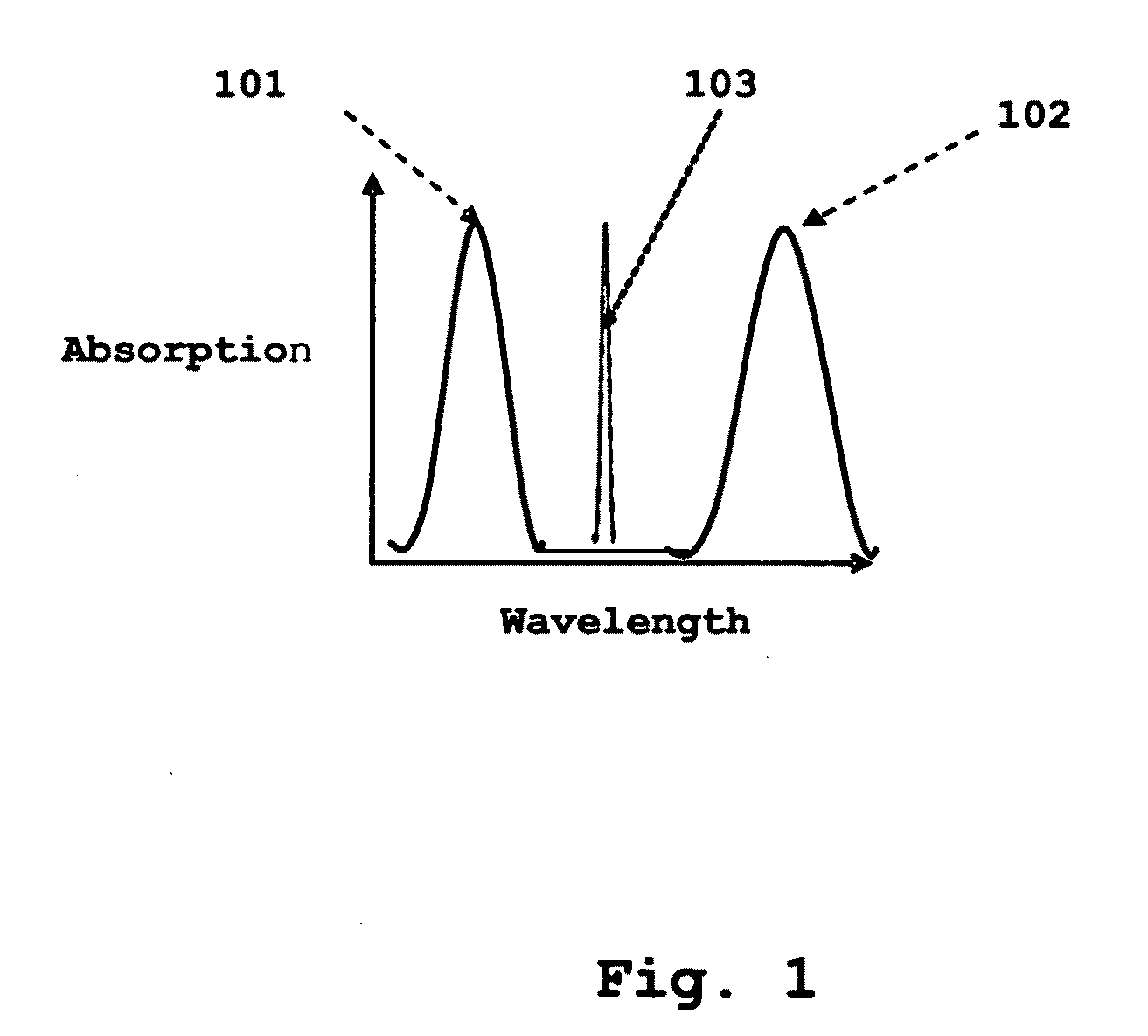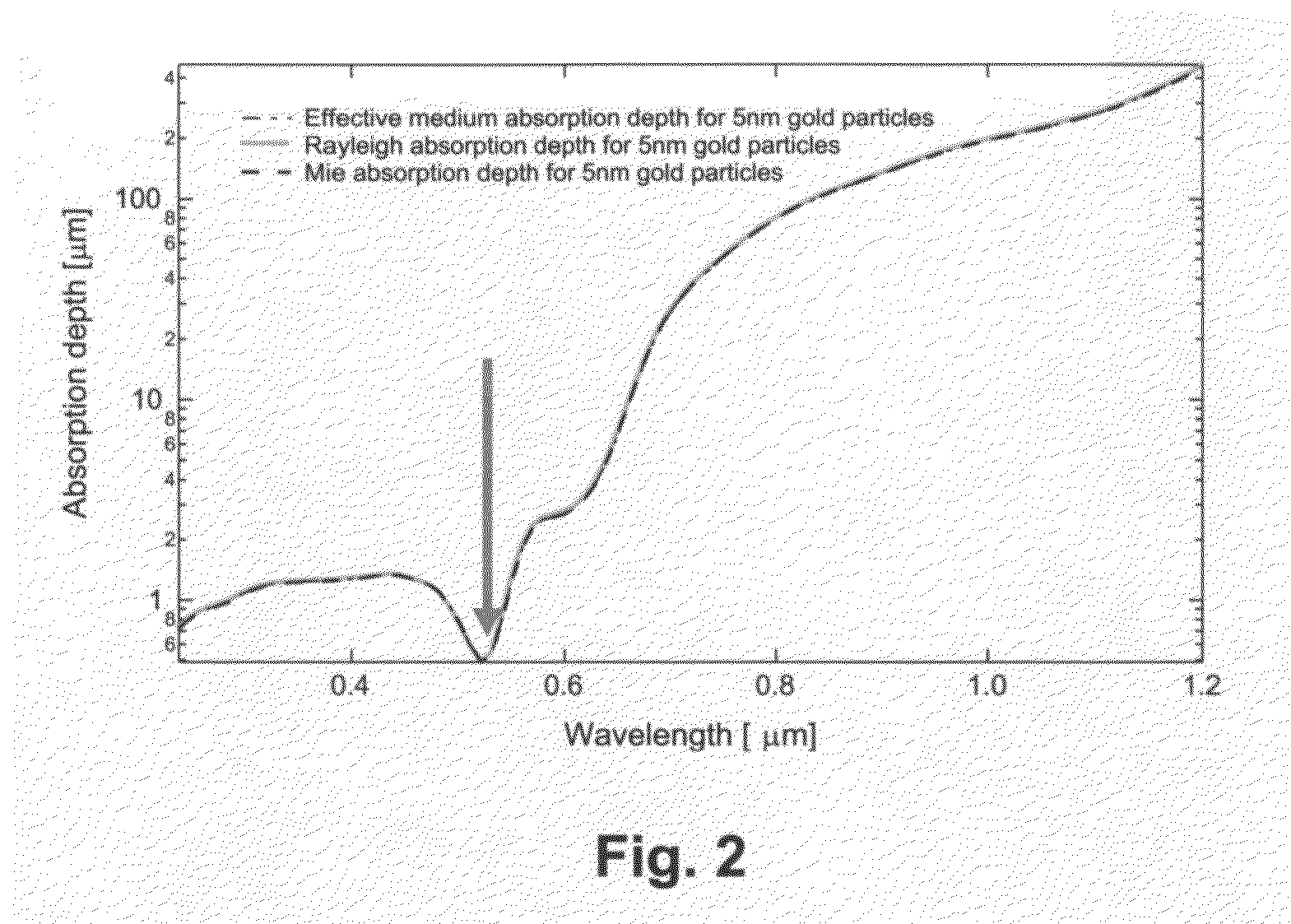Nanomaterial facilitated laser transfer
a technology of nanomaterials and lasers, applied in nanoinformatics, nanotechnology, transportation and packaging, etc., can solve the problems of introducing contamination into the deposited material, affecting the deposition process, and affecting the deposition effect, so as to facilitate the deposition/removal
- Summary
- Abstract
- Description
- Claims
- Application Information
AI Technical Summary
Benefits of technology
Problems solved by technology
Method used
Image
Examples
example 1
[0048]In this example, the target deposition material of interest was chosen as an organic material (tris-(8-hydroxyquinoline)Al) (Alq3). Alq3 is an organic material commonly used in the manufacture of OLED displays. The light absorption material was formed from Ag nanoparticles having sizes in the range from about 30 nm to about 40 nm in diameter and protected with an organic SAM coating. The SAM coating may be applied to the Ag nanoparticles by a well known two-phase reduction method as discussed, for example, by Hostetler et al, Langmuir 1998, Vol. 14(1), pp. 17-30 (1998), the entire contents of which is incorporated herein by reference for all purposes. Aqueous metal salts are mixed in a toluene solution containing long-chain alkylammonium surfactants to form a two-phase system. Vigorous stirring for about 1 hour to about 3 hours transfers the metal salts into the organic phase, which is then separated. A measured quantity of surface monolayer, hexanethiol is added to the organi...
example 2
[0054]Donor and acceptor surfaces were prepared as described in Example 1 and different transfer conditions and patterns were investigated.
[0055]FIGS. 7a-f are photographs of the Alq3 layers under UV illumination. FIG. 7a contains a photograph of the first surface of the acceptor substrate after laser irradiation and material transfer. The green letters “UCB” and the star shapes correspond to regions where the laser irradiation resulted in the transfer of the Alq3 material from the donor substrate to the acceptor substrate. The “UCB” letters were formed from combining the 0.9 mm by 0.9 mm square shapes discussed in Example 1. The star shapes were formed by projecting the laser beam through a mask containing star shapes before the laser beam reached the donor substrate structure. The fluorescence of the Alq3 shapes provides strong evidence that the transferred Alq3 layer was not significantly damaged by the transfer process.
[0056]In FIG. 7a, the line of stars indicated at (i) was pat...
example 3
[0059]Donor and acceptor surfaces were prepared as described in Example 1 and different transfer conditions and patterns were investigated.
[0060]FIGS. 8a-f contain photographs of the Alq3 layers under UV illumination. FIG. 8a contains a photograph of the first surface of the acceptor substrate after laser irradiation and material transfer. The green letters “LTL” and the star shapes correspond to regions where the laser irradiation resulted in the transfer of the Alq3 material from the donor substrate to the acceptor substrate. The “LTL” letters were formed by combining 0.9 mm by 0.9 mm square shapes discussed in Example 1. The star shapes were formed by projecting the laser beam through a mask containing star shapes before the laser beam reached the donor substrate structure. The fluorescence of the Alq3 shapes is strong indication that the transferred Alq3 layer was not damaged by the transfer process. In FIG. 8a, the line of stars indicated at (i) was patterned using a laser puls...
PUM
| Property | Measurement | Unit |
|---|---|---|
| diameters | aaaaa | aaaaa |
| absorption depth | aaaaa | aaaaa |
| thickness | aaaaa | aaaaa |
Abstract
Description
Claims
Application Information
 Login to View More
Login to View More - R&D
- Intellectual Property
- Life Sciences
- Materials
- Tech Scout
- Unparalleled Data Quality
- Higher Quality Content
- 60% Fewer Hallucinations
Browse by: Latest US Patents, China's latest patents, Technical Efficacy Thesaurus, Application Domain, Technology Topic, Popular Technical Reports.
© 2025 PatSnap. All rights reserved.Legal|Privacy policy|Modern Slavery Act Transparency Statement|Sitemap|About US| Contact US: help@patsnap.com



